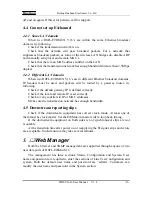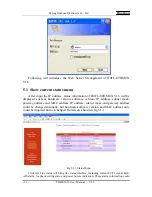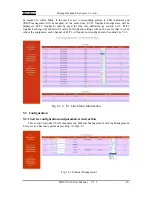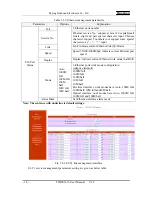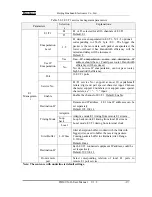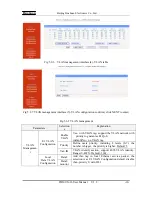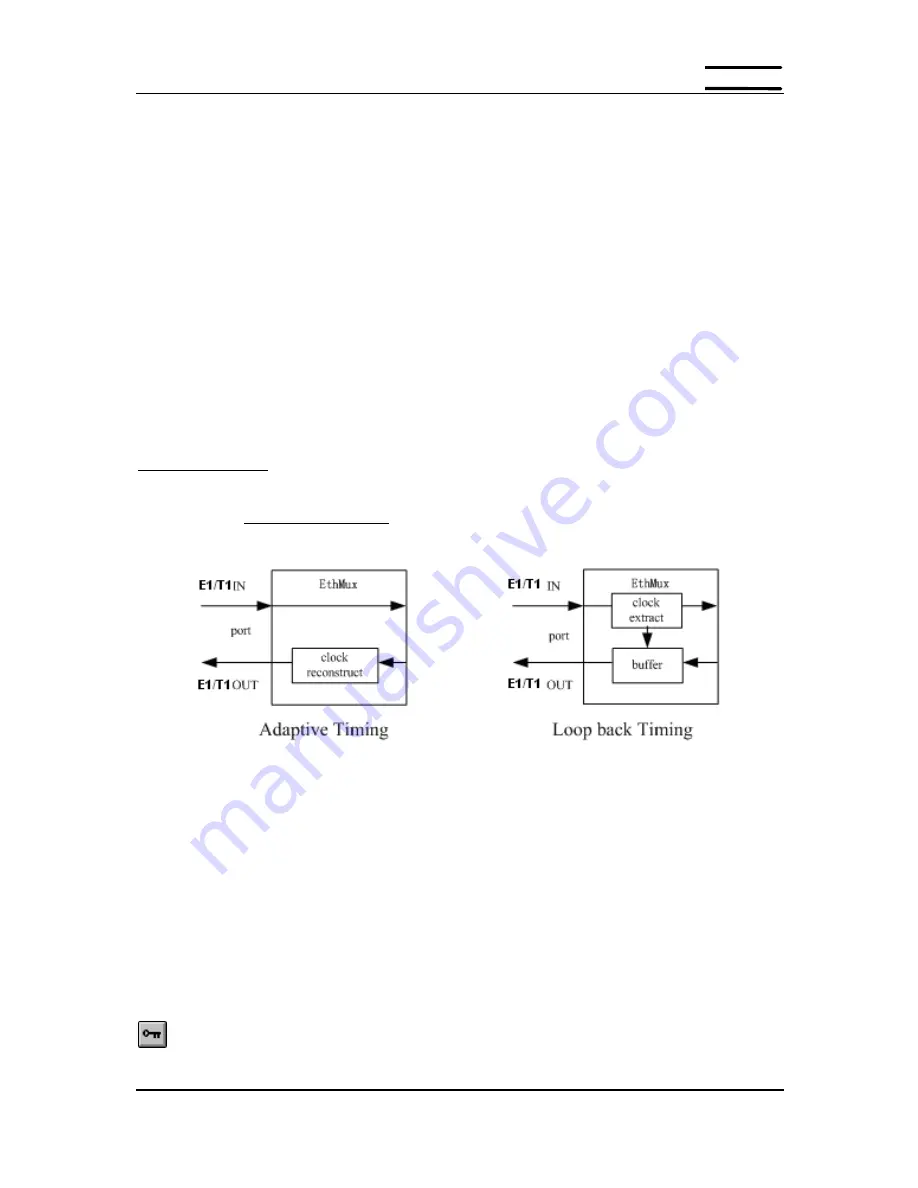
Beijing Huahuan Electronics Co., Ltd
Huahuan
- 4 - TDMUX-16 User Manual V1.2
Ethernet cable often connects to the outdoor unit, posing danger to lightning
strikes that can seriously damage the equipment. To protect the equipment as
well as people, surge protection devices with good earth connection is strongly
recommended. Poor earth connection may also hinder the operation of the
Ethernet port, causing severe packet losses.
1.3 Timing modes
To emulate a clear E1/T1 channel over a packet network, the H0FL-ETHMUX
V16 not only conveys data stream content correctly from the source to the
destination, but also passes timing. Packet networks do not provide such built-in
timing transparency mechanism as TDM networks do. H0FL-ETHMUX V16 uses
its proprietary algorithm to reconstruct the E1/T1 clock at the destination. The
recovered clock is of very high quality, with low jitter and wander. Typical
frequency offset is within
±
5ppm, and jitter is below 0.1UI. It can be adopted in most
applications. This timing mode of rebuilding the E1 clock at the destination is called
Adaptive Timing.
For applications where separate clock distribution network exists, another
timing mode, Loop back Timing, may be used for maximum clock quality.
The two timing modes of H0FL-ETHMUX V16 are depicted in Fig.1.3-1.
Fig.1.4-1 E1/T1Timing modes
Correct timing mode setting is important for smooth operations. In most cases,
setting both units to adaptive timing mode is sufficient. But sometimes, setting one
unit to loop timing mode may work better. For example, setting the
H0FL-ETHMUX V16 unit connected with the clock master (such as local exchange)
to loop back mode, and the other unit connected with the clock slave (such as PBX
or remote module) to adaptive mode, is probably better than setting both to adaptive
modes.
One typical error in telecom applications is to connect two communication
devices that are both clock slaves. Neither will H0FL-ETHMUX V16 support such
operation no mater how the timing modes are set.
Note: that the E1channel emulation takes several minutes to stabilize.
During that period, clock drift may exceed the limit, errors and slips may

















